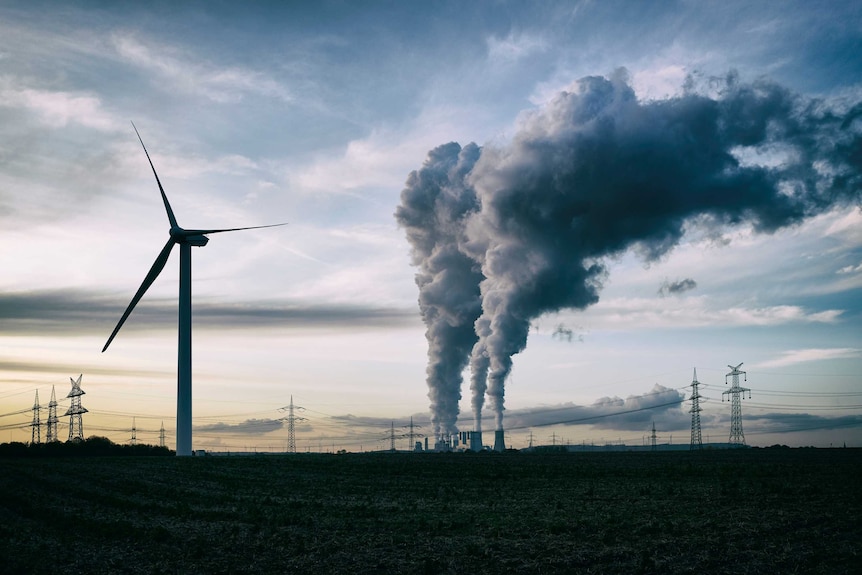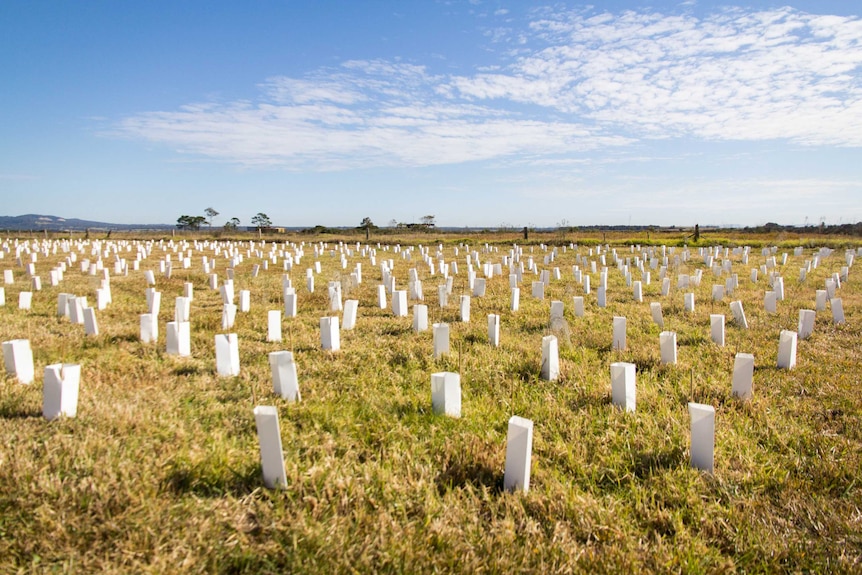Extract from ABC News
A new report from the Climate Council lays out an ambitious challenge to Australian governments and industry: get carbon emissions to net zero by 2035.
Key points:
- Australia needs to reduce emissions by 75 per cent by 203 and reach net zero by 2035, the report says
- The US is expected to announce increased Paris targets as early as next week
- The EU is already in talks to slap tariffs on imports from high-emitting nations
Failure to do so could see us become increasingly economically isolated from our trading partners and at greater risk of climate-related disasters, according to the report authors.
The US Biden presidency has "ushered in a new era of climate cooperation" that Australia will be left out of if we don't radically increase our emissions reduction efforts, they say in today's report, Aim high, go fast: Why emissions need to plummet this decade.
They've warned if Australia continues to have targets that lag behind those of our trading partners, we could cop a de facto carbon tax from them.
"The EU and others may slap import tariffs [on our exports]," said Will Steffen from the ANU's Climate Change Institute, and the report's lead author.
He said there would be increasing pressure on Australia to take tougher emissions reduction targets to COP26, the UN climate conference to be held in Glasgow in November, where many countries are expected to do the same.
A tariff on our exports by importing countries would make it harder for Australia to compete with less polluting economies, said the Climate Council's Nicki Hutley, who was not an author of this report.
Countries who have shouldered the cost of transitioning to cleaner infrastructure are likely going to attempt to "level the playing field", she said.
"It's mainly the EU that has come up with the proposed scheme — they call it a 'carbon border adjustment mechanism'.
"It's effectively [saying], 'why should European manufacturers be punished when others aren't pulling their weight [on emissions reduction]?'."
Professor Steffen said he expected the US to significantly ramp up its own emissions reduction target this year, which would in turn put further pressure on countries like Australia to do more.
"I would be surprised if it was any weaker than 40 per cent and it might go to 50 per cent [emissions reduction] by 2030," he said.
"I don't have any inside information, but that's my speculation.
"In being such an important ally, what [the US] does is going to have a big impact on what happens here."
US President Joe Biden is expected to announce new 2030 targets next week, as 40 countries including Australia attend a virtual leaders' summit on climate on April 22 and 23.
Mr Biden announced plans for the summit in his first few days in office.
"In his invitation, the President urged leaders to use the summit as an opportunity to outline how their countries also will contribute to stronger climate ambition," a White House statement said.
Government concerned about 'carbon tariffs'
Australia's current targets are a reduction of between 26 and 28 per cent on 2005 levels by 2030.
A spokesperson for the Minister for Energy and Emissions Reduction Angus Taylor said they welcomed the Biden administration's return to the Paris Agreement and "increasing global focus on the practical solutions" for achieving net zero.
"We have a strong 2030 target," they said.
"We are developing a long-term emissions reduction strategy which will be released ahead of COP26."
However, they said carbon tariffs "aren't a solution to rising global emissions".
"We are concerned about the EU's proposal for a carbon border adjustment mechanism (CBAM)," the spokesperson said.
"Such a mechanism risks becoming a new form of protectionism and undermining international cooperation on climate change."
How do we get to net zero?
Today's Climate Council report outlines the need to reduce Australia's emissions by 75 per cent by 2030, on the way to achieving net zero by 2035.
Several scenarios have been modelled to achieve this using existing technology, including by Climate Works — a climate policy research group working within Monash University's Sustainable Development Institute.
Given the scale of the reductions required, emissions cuts need to come from all sectors with a focus on energy efficiency, decarbonising the grid, switching to renewable fuels and carbon offsetting, Climate Works' Amandine Denis-Ryan said.
"It's achievable to have 80 per cent renewables by 2030," she said.
"[We also need] a reasonably fast electrification of transport. So 75 per cent of new car sales by 2030 and 60 per cent of new truck sales [need to be electric]."
Electric vehicles and machinery, and cleaning the grid, will allow industry to achieve significant emissions savings.
But the key is for government investment to leverage the private sector, she said.
Using public money to reduce the cost of clean energy and infrastructure, such as electric vehicle and truck fleets, could allow investment at a scale that will in turn reduce costs.
"What we need to see is large-scale mechanisms that are going to create that pull, not only by government, but also by the private sectors," Ms Denis-Ryan said.
"For instance, there's a lot of interest globally at the moment in hydrogen. If capital is deployed at scale in this technology, we could see very strong cost reductions and accelerated deployment by 2030.
Economic opportunities are already presenting themselves for countries that are making rapid transitions to renewables, according to Professor Steffen.
Singapore, for instance, is looking for opportunities to get to net zero carbon emissions.
However, being a large city on a small island, it will have to import clean energy and invest in offshore offsets to do this, he said.
"That’s an open invitation to Australia. This is a huge opportunity that we shouldn’t miss," Professor Steffen said.
The federal government's "Technology Investment Roadmap" will drive $70 billion in new investment by 2030, according to Mr Taylor's spokesperson.
"It's a plan to accelerate new and emerging technologies like hydrogen, batteries and soil carbon," they said.
"The Morrison government is already supporting the uptake of future fuels technologies, such as electric vehicles."
But Professor Steffen says the government is lagging behind global momentum.
"They're really way behind what's happening in technology and what's happening in other countries," he said.
"I would be surprised if they took [this report] seriously. But I think a lot of people will take it seriously; certainly people in the private sector will take it seriously."
1.5C target already gone without drawdown?
The ambition of the 2015 Paris Agreement on climate change was to limit warming above pre-industrial levels to "well below" 2C, and preferably 1.5C.
But that 1.5C target is now unachievable without overshoot and drawdown, according to today's report.
This means we will overshoot 1.5C of warming, and then use technologies to draw down CO2 from the atmosphere, eventually returning average warming back to 1.5C or below.
But the problem with relying on drawdown is that no technology to do this has so far been proven to work, or to be feasible at scale.
Instead, we are limited to things like soil carbon capture and mass tree planting.
However, there is not a scientific consensus that we can no longer keep warming to within 1.5C; indeed, many climate scientists still think we can.
Adjunct Professor Bill Hare from Murdoch University and Dr Carl-Freidrich Schleussner from Humboldt University say they have been trying to raise issues with this claim with the Climate Council for the past six months, "to no avail".
"The big challenge their report reinforces is the need for urgent action to get on that 1.5C pathway, [so] it's very paradoxical to me that they've chosen to attack that target," Dr Hare said.
In a rebuttal to the 1.5C overshoot claim, Dr Hare and Dr Schleussner argue that the science still very much supports 1.5C as an achievable target.
"This bold claim is in contradiction with a range of other recent high-level scientific reports, including the UNEP Gap Reports and the recent IPCC Special Report on 1.5˚C (IPCC SR15)," they said.
"It is clear that the evidence presented in the Climate Council of Australia report itself does not support their claim that 1.5C will be exceeded. Nor that 'significant overshoot and subsequent drawdown' would be the consequence."
Maintaining the 1.5C limit will be on the agenda at next week's summit.
“A key goal of both the leaders' summit and COP26 will be to catalyse efforts that keep that 1.5-degree goal within reach,” a White House statement said.
The modelling done by Climate Works included significant investment in tree planting to reach net zero emissions in Australia by 2035.
But there are limits to the amount of carbon that forestry can capture, and the length of time it can be stored.
Avoiding warming in the first place is still our best option, according to Professor Steffen.
Without drawdown, our best hope is now to aim to limit warming to 1.8C. On our current trajectory, we will overshoot 1.5C around the mid-2030s, he said.
"Basically we can still hold temperature rise to well below 2C and do that without overshoot and drawdown.
"Every tenth of a degree actually does matter — 1.8C is better than 1.9C, and is much better than 2C."
At 2C, tropical reef-building corals are expected to "mostly disappear", and about 10.4 million more people will be exposed to impacts from coastal weather and sea-level rise at 2C compared to 1.5C, according to the IPCC.
Australia is also expected to experience much more intense bushfires, floods, droughts and other severe weather and climate events at 2C, compared to 1.5C.
"Adaptation is going to become more important, challenging and costly," Professor Steffen said.
"But this reinforces the mantra that every tenth of a degree matters.
"Despite the scale of losses at 1.5C, there remains much that can be protected."
While transitioning to a net zero economy over the next 15 years will be difficult, Professor Steffen said not moving as quickly as possible to get emissions down will be more costly in the long run.
"The targets we’ve proposed for Australia … take into account our technological capability and what I think are our moral and ethical obligations," he said.
"Instead of doing the minimum, we should do our best. Doing our best will actually have a lot of benefits for us, not just in stabilising the climate, but [for] our society and economy."
No comments:
Post a Comment